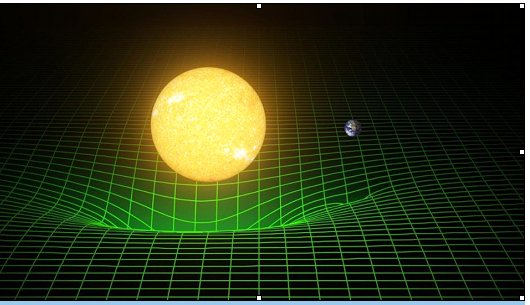Gravitational wave detection, LIGO India and fast light: Cosmic world of new Era
Dr. Satchi Kumari
Newton in 1687 first proposed the concept of gravity in his famous book “PRINCIPIA”. He described it as a force that pulls objects towards each other and its strength depends on how massive the objects are and how far apart they are situated. The more massive the object is the more gravitational pull it experiences. This concept of gravity by Newton was magical but Einstein’s theory of relativity in 1915 was a surprise to the world. Before this, space and time were considered as two separate entities, space was just a vast emptiness where stars and planets existed whereas time was considered as ticking around the clock. Einstein coined in his special theory of relativity that space and time are connected in a single fabric called space-time. He further claimed that speed of light is always constant no matter how fast we are moving. This discovery led to the idea that massive objects can bend space-time and it was proposed that gravity is the result of this bending. The gravitational force which we are experiencing on the earth is not an imaginary force but occurs due to sitting of heavy sun in the center of space-time fabric creating a dip and a curved structure around it.
Fig.1 Schematic of the bending of space-time curvature around heavy objects resulting into gravitation pull [T. Pyle/Caltech/MIT/LIGO Lab]
These gravitational waves carries information about mysteries of the cosmic world. It originated from most violent events in universe releasing enormous energy, viz., black holes collision, collapse of massive stars, merging of neutron stars. These waves neither emits particles nor strikes with anything, it is invisible and extremely weak. Its detection was a topic of discussion and debate among scientific fraternity across the globe. The breakthrough happened in 1974 when two astronomers, Russell Hulse and Joseph Taylor, using the Arecibo Radio observatory in Puerto Rico discovered a binary pulsar 21000 light years from earth. The way this pulsar was losing its energy and angular momentum was in complete agreement with Einstein’s special theory of relativity. They received the noble prize for this discovery, since it opened up new possibilities for the study of gravitational waves.
After years of rigorous scientific expedition the actual detection of gravitational waves, due to collision of massive black holes, 30 times as massive as our sun, happened very recently on 14th September 2015. This experiment was a collaborative work by scientist at MIT and Caltech using a twin Laser interferometer gravitational wave observatory (LIGO) interferometers located at Livingston, Louisiana and Hanford, Washington.
India has also come forward in this research area and LIGO-India was first approved by Indian cabinet in February 2016. However, the full budgetary sanction came in April 2023. It will be fully functional by 2030 and work in unison with the LIGO in U.S., the Virgo observatory in Italy and the Kamioka Gravitational wave detector (KAGRA) in Japan. LIGO is a L-shaped interferometer spans 4 km in length and uses laser light split into two beams. These beams travels back and forth, striking on very precisely configured mirrors. The beams monitor the distance between mirrors and changes infinitesimally on encountering with gravitational waves. It is very difficult to measure these changes. Hence lot of research is anticipated in future for improving the sensitivity of this instrument by reducing the noise. One such effort in this direction is white light cavity (WLC) augmented with fast light.
A WLC is an optical cavity with high buildup, yet broadband response. For this purpose a transparent medium with anomalous (negative) dispersion has to be used in the cavity so that the variation of vacuum wavelength with frequency can be canceled. Fast light also known as superluminal light arises in a medium with anomalous dispersion. Hence by creating fast light, WLC can be realized. LIGO coupled with WLC is anticipated to be more sensitive for gravitational wave detection. Further research has to be carried out for much deeper insight into these areas.
Till now we only had the eyes to look into the mysteries cosmic world via electromagnetic signals but now we even have the ears to listen through the gravitational waves.
Author
The author Dr. Satchi Kumari has worked in the area of fast light and generated it using photorefractive barium titantae crystal experimentally and strontium niobate crystal theoretically.

